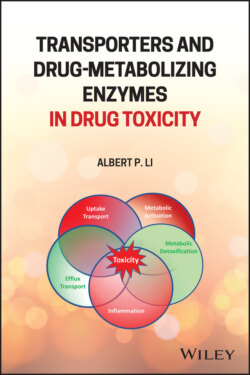Читать книгу Transporters and Drug-Metabolizing Enzymes in Drug Toxicity - Albert P. Li - Страница 37
2.5.3 CYP2D6
ОглавлениеThe CYP2D6 polymorphism has been studied extensively, and 139 major variants have been cataloged in the PharmVar. The most common null allele in the Caucasian population is CYP2D6*4, accounting for the majority (70–90%) of the poor metabolizer phenotype [41, 73]. CYP2D6*4 carriers all have a 1847G>A mutation, causing splicing defect and no protein expression in the liver. The CYP2D6*10 allele is most commonly found in Asians [74]. Double SNP mutations 100C>T (P34S) and 4181G>C (S486T) render the protein unstable. In the African population the CYP2D6*17 allele has the highest frequency [75]. Triple mutations, 1022C>T (T107I), 2851C>T (R296C), and 4181G>C (S486T), lead to a structural change in the active site, which alters the substrate specificity. The pharmacogenetic impact of CYP2D6 on opioid drugs has been demonstrated [76]. Tramadol, for example, is bioactivated by CYP2D6 into active metabolite O‐desmethyltramadol [77]. Poor metabolizers are insensitive to opioids and have much lower analgesic response [78]. In contrast, ultrarapid metabolizers with duplicated CYP2D6 genes show significantly increased efficiency in converting opioid prodrugs such as tramadol and codeine into active metabolites, which could cause opioid overdose [79]. The impact of CYP2D6 polymorphism is not limited to opioid drugs but covers a spectrum of clinical drugs. It might be a contributing factor to the hepatoxicity of perhexiline and trazodone [80, 81]. The case of a CYP2D6 poor metabolizer with perhexiline‐associated DILI has been reported. Significantly higher plasma Cmax of m‐chloro, 4‐phenylpiperazine, a hepatotoxic metabolite of trazodone, was observed in poor metabolizers in comparison to extensive metabolizers. However, the pharmacogenetic association has not been confirmed.
